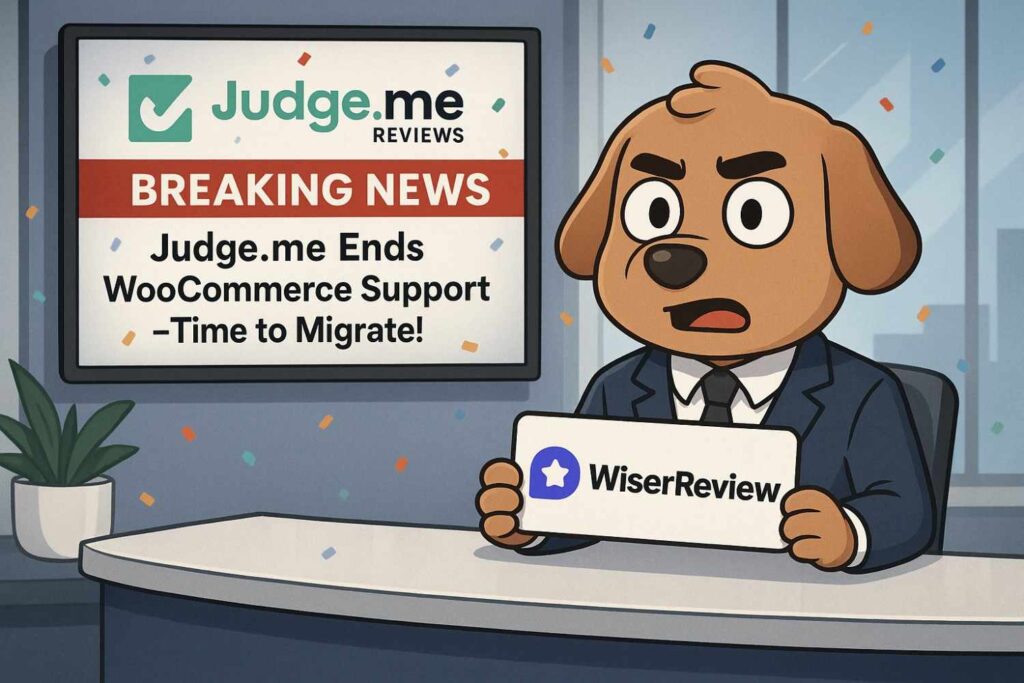As of 2025, Google hosts approximately 57–58% of all online reviews, making it the most influential platform for consumers evaluating local businesses.
With 81% of people checking Google first when reading reviews and 73% trusting only those from the past 30 days, staying current and credible on your Google Business Profile is no longer optional; it’s essential.
In this guide, we break down the most up-to-date Google reviews statistics and turn them into clear, actionable insights for business owners, marketers, and SEO teams aiming to boost visibility and conversions in AI-powered and traditional search.
Quick Highlights
- Reviews influence ~10% of local SEO rankings, making them a direct ranking signal in Google Maps and local packs.
- Businesses see 15–20% higher conversion rates when they actively collect and manage customer reviews.
- Revenue lifts by up to 18% for businesses with a strong review presence.
- Google accounts for 57–58% of all online reviews, making it the most critical platform for reputation management.
- 73% of consumers only trust reviews from the last 30 days, emphasizing the need for a steady stream of new feedback.
- 97% of review readers also read business responses, highlighting the importance of engaging with customer feedback.
Market Share & Usage Statistics
The review landscape is not a level playing field. It’s heavily weighted toward a single platform.
1. Google hosts ~57-58% of all online reviews.
Google’s sheer volume of user-generated content makes it the most critical review site to monitor. This is a crucial data point for anyone creating a strategy for online feedback.
2. Google holds ~73% of the “review platform” market share.
This statistic reinforces Google’s dominance. While other review sites like Yelp and TripAdvisor matter, Google’s platform share means efforts invested here yield an outsized impact on a local business’s success.
3. 81% of consumers use Google reviews to evaluate local businesses.
This high number demonstrates that the majority of potential customers are actively using your Google Business Profile to make judgments. If your profile is lacking, you’re missing a massive opportunity for customer acquisition.
4. 88% read them before making a choice.
Reading reviews is not an occasional activity; it’s a critical part of the consumer decision-making process for nearly nine out of ten consumers.
5. 54.7% read at least four reviews before purchasing.
This statistic highlights the importance of review volume. It’s not enough to have a few positive reviews. Customers want a critical mass of recent feedback to feel confident in a business.
Why it matters: Google’s commanding lead in market share means it’s where you have the most direct influence over your business’s online presence. By focusing your efforts on this platform, you can reach the majority of potential customers who are actively seeking social proof.
Trust & Recency Insights
In the world of online reviews, “freshness” is more than a buzzword; it’s a requirement for trust.
The semantic analysis of customer feedback reveals a strong correlation between recency and perceived trustworthiness.
6. 73% only trust reviews from the past 30 days.
The perceived value of a review has a half-life. A glowing review from three years ago holds little weight for today’s consumers. This is a critical insight for understanding the review process.
7. 83% require review recency for trust.
Recency is now considered a prerequisite for trust by the vast majority of consumers. This is where the concept of an “always-on” review strategy becomes essential. You can’t just run a campaign once and expect it to last.
8. 74% trust businesses more with positive Google reviews.
This statistic is the bedrock of online reputation management. Positive feedback builds trust, and trust directly influences whether a consumer chooses your business over a competitor.
9. 88% trust online reviews like personal recommendations.
The influence of user-generated content has reached a point where it’s on par with a word-of-mouth endorsement from a friend or family member.
Why it matters: Recency is the key lever in building social proof. A steady cadence of new reviews ensures that your profile passes the “trust test” for the three-quarters of buyers who only value recent feedback. The right review diversity helps to create a convincing, authentic picture of your service quality.
Star Rating & Credibility Factors
While a perfect score might seem like the goal, the average star rating that builds the most trust is actually in a specific range.
Natural language processing of review texts has shown that a few minor criticisms with professional responses can be more persuasive than a flawless score that seems too good to be true.
10. Engagement peaks for businesses rated 3-4 stars.
While this may seem counterintuitive, an average rating that isn’t perfect can signal authenticity and a willingness to improve.
11. Most trusted average rating: 4.2-4.5 stars.
This is the “trust sweet spot.” It’s high enough to signal quality but includes enough minor variation to seem real and not manipulated.
12. More than 4 negative reviews can deter ~70% of prospects.
A business can withstand a few negative reviews, but a critical mass of bad feedback creates significant friction for potential clients.
13. Ratings above 4.8 may look suspicious without authenticity.
Perfect scores can trigger skepticism. It’s a prime example of where authenticity and professional responses to even a negative review can increase credibility.
Why it matters: Your star ratings are the first data point many consumers see. Aiming for the “trust sweet spot” rather than a perfect 5.0 shows that you’re a real business with real customers and that you’re responsive to all types of online feedback. The ability to respond to negative reviews professionally is a powerful signal of commitment to customer satisfaction.
Also See: 8 Best Google review management software for business growth
Volume Benchmarks
How many reviews do you need to be competitive? The answer depends on your industry and local market, but benchmarks exist to help you set actionable goals.
The sheer volume of customer reviews acts as a validation signal for both humans and Google’s search algorithms.
14. Top-ranking businesses average ~47 Google reviews.
For most local categories, this is a solid benchmark for being seen as a credible and established player.
15. Average local business: ~39 reviews.
This is the baseline. To be competitive, you need to exceed this number and maintain a consistent flow of new customer feedback.
16. Hotels average ~309 reviews
High-churn industries like hospitality and restaurants require a significantly higher volume of reviews due to the sheer number of daily transactions.
Why it matters: Your business reviews are a local search ranking signal. By targeting a specific volume benchmark, you can create a clear roadmap for your review acquisition strategy. A high number of authentic reviews also serves as a strong signal of your business’s success.
Impact on SEO, Conversions & Revenue
Reviews influence more than just a customer’s decision; they have a direct and measurable impact on your bottom line.
17. Reviews influence ~10% of local SEO ranking factors.
This is a well-established signal. Google’s search algorithms use factors like review volume, velocity, rating, and keyword-rich text to determine your position in the local search results.
18. Appearing in the Google 3-pack boosts traffic 126% and actions 93%.
The 3-pack is the holy grail of local SEO. A strong review profile is one of the key factors that can get you there and increase click-through rates.
19. Positive reviews can lift revenue by up to 18% and conversion rates by 15-20%.
This is the ultimate “why it matters” statistic. Investing in your review process isn’t just about optics; it’s about measurable revenue growth and higher conversion rates.
Why it matters: A holistic online reputation management strategy is also a high-ROI marketing strategy. By driving more reviews, you are directly influencing your visibility in Google Maps and Search, and increasing the number of people who become paying customers.
Related: Smart customer review marketing strategies
Response Behavior & Expectations
The conversation around online feedback doesn’t end when a customer leaves a review; it’s just getting started.
Business responses are read by nearly everyone, making them a powerful tool for reputation management.
20. 97% of review readers read business responses; 53% expect replies to negative reviews within a week
This is a staggering statistic. Your response is a public declaration of your commitment to customer satisfaction. It’s not just for the original reviewer; you are writing for all future potential clients who will see the interaction.
Why it matters: Responding to reviews is a low-cost, high-impact activity. It allows you to shape the narrative, show you care, and even turn a bad review into a joyous brand moment. Timely and thoughtful replies are an essential part of the customer engagement feedback loop.
Fake Review Risks & Enforcement
The integrity of online reviews is constantly under threat from fraudulent activity.
21. ~11% of Google reviews may be fraudulent; Google removes millions annually.
While Google is constantly fighting fake reviews, they still exist. This statistic highlights the importance of focusing on organic, authentic reviews from satisfied customers rather than trying to game the system.
Why it matters: Authenticity is the only long-term strategy for building a strong online reputation. Engaging in prohibited tactics can lead to penalties and erode the trust you’ve worked so hard to build. Focus on your service quality and a compliant process for requesting honest feedback.
Best Practices to Leverage These Statistics
Now that you have the data, here’s how to put it into action.
➔ Keep reviews fresh with a steady cadence.
The 30-day trust benchmark means you need an always-on review strategy.
Automate requests via SMS or email to maintain a consistent flow.
This also helps with the velocity signal in local rankings.
➔ Respond quickly, especially to negative reviews.
Make it a priority to reply to all negative feedback within 72 hours.
Your response is a form of user-generated content in itself and is a prime opportunity for reputation management.
➔ Diversify platforms without neglecting Google.
While Google is dominant, maintaining a presence on other review sites like Yelp or TripAdvisor is wise, especially if they are prominent in your industry.
This also contributes to positive review diversity.
➔ Avoid manipulation; build reviews organically.
The data shows that authentic reviews are the most effective. Don’t pay for reviews, gate them, or use other tactics that violate Google’s policies.
The long-term trust you build is far more valuable than any short-term gains.
Conclusion
Google commands the majority of the online review market share and is the most influential platform for local buying decisions.
The modern local business must embrace an ongoing, data-driven approach to reputation management.
Consumers value review volume, quality, and especially recency.
73% of consumers only trust reviews from the last 30 days. These reviews drive tangible business outcomes, from a ~10% impact on local SEO factors to 15-20% conversion lifts and up to 18% revenue gains.
The playbook for 2025 is clear: prioritize an “always-on” review strategy, focus on fast and thoughtful responses, and build an authentic profile that serves as an engine for growth.
Sources
Wisernotify | Socialpilot | Brightlocal
Frequently asked questions
Google reviews help build trust, improve local SEO, and influence customer decisions. A higher rating often leads to more clicks and visits.
Studies show that more than 90% of customers check online reviews, and Google is the most used review platform.
Yes. Reviews are part of Google’s local ranking factors. More positive reviews and fresh feedback can improve your visibility in local search results.
It’s best to send review requests after each purchase or service. This keeps your Google reviews fresh and consistent.
You can request removal if a review violates Google’s policies. Otherwise, the best approach is to respond quickly and professionally to show you value feedback.

 5 min
5 min 

